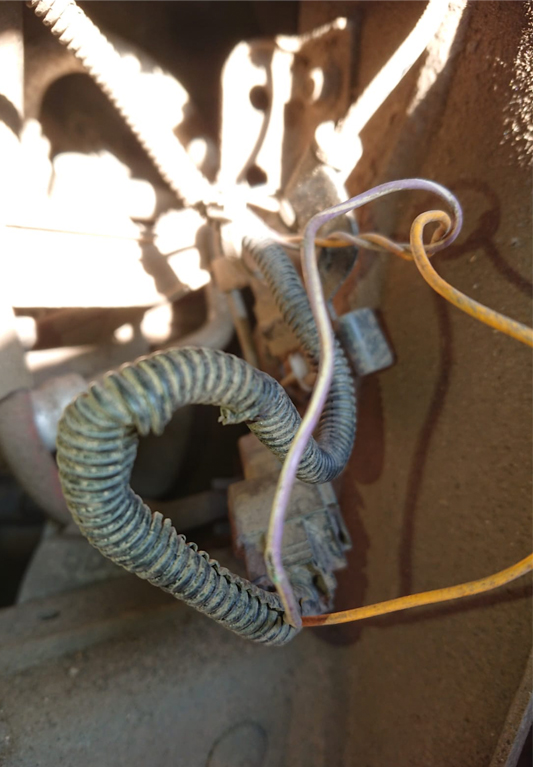This month, Josh Jones discusses a couple of relatively simple tasks that he recently encountered in the workshop. Whilst they weren’t too much trouble to deal with, it was still interesting and satisfying to get to the heart of the problem.
Ford Ranger 3.2 TDCi
This vehicle came in displaying three warning lights in the form of the ABS, ESP and engine warning lamps. According to its owner, the car had been looked at for this issue during its last rountine service (which was nearly 3,000 miles prior to its arrival at my garage). The repairer had apparently scanned the vehicle for DTCs and advised that the vehicle would have to visit a dealer, as the fault was not related to a wheel speed sensor and they were not prepared to investigate further. After hearing this report from the owner, I was intrigued.
A scan on my new Launch x431 tool, which I have to say boasts a very user-friendly interface, revealed relevant trouble codes stored in both the ABS and ECU. The code stored in the engine computer gave me an immediate clue as to why the previous garage may have turned the work away. It showed a communication DTC and if the ABS ECU was not accessible by the garage, they may have perhaps suspected a bus system fault.
Given the code that was stored in the ABS unit, I can only presume this is what had occurred. The code was U0418, which translated as ‘invalid data received from ABS control module’. Logged in the ABS control unit was a circuit fault on the left front wheel speed sensor! I immediately used the live data function on my tool to graph both front wheel speeds against each other and moved the vehicle into the yard to test. Needless to say, no road speed was sensed at the front left and speed consistent with my driving was picked up on the right.
I was true to my philosophy, in that after visually inspecting the speed sensor in question with the respective wheel removed, I did not immediately reach for the phone and order a replacement without evaluating the rest of the components that could have been responsible for the problem. With this vehicle being a pick-up truck, a lot of the wiring loom and the ABS unit were easily accessible, so I followed the wiring from the sensor towards the control unit and after about 50cm or so, which was just inside the chassis leg, I noticed that the harness had been secured with a zip tie (this did not look factory fitted).
When I cut the zip tie away and exposed the loom, I found what is shown in the photograph (see below).

This vehicle had been fitted with a replacement engine at some point, and parts of the loom had been re- secured. It seemed that this particular section had been pinched, causing one of the ABS sensor wires to break on the loom side of the sensor connector. Initially, very careful examination of the wiring was required as the wire insulation was largely intact, but the internal strands had completely severed.
Needless to say, a repair was carried out and after a road test, all was well with all warning lamps extinguished. To summarise, I am sure the owner of this vehicle would have preferred to have all necessary repairs carried out as part of a service, and the vehicle coming to me had cost him quite a lot of extra time. Since the introduction of full vehicle networking, it is common to see ‘invalid data’ DTCs stored in control units sharing a network, as if a piece of information is not available to one control unit it is consequently not able to provide it to any other node that requests related information. I feel this is worth mentioning, as I don’t like to think of garages turning away work that could have quite easily been carried out on site with the right approach.
Renault Trafic 1.9 dCi
The engine in this van was suffering from sluggish performance that had gradually deteriorated over time. A road test confirmed this, and no DTCs whatsoever were stored. To cut a long story short, after evaluating the general performance of the fuel system through use of live data and some scope traces of available rail pressure (please see previous issue of PMM for more detail on this method), I was not able to see any immediately noticeable issues. I suspected an air metering problem.
The air mass meter on this system transmits a varying voltage to the ECU to form a signal, as opposed to a digital signal used on most new setups, so it was easy to evaluate using an oscilloscope. There was definitely a varying signal, as there should be when a full throttle test was carried out, but it is always difficult to identify a discrepancy in output voltage compared to the actual air flow without a known good comparison.
A smoke test confirmed there were no intake system leaks that could have corrupted the flow through the meter, so I opted for a theoretical airflow calculation in order to establish if the air mass reading the ECU was receiving was fairly consistent with what the engine should be consuming in real time. This basically involves working out how much air the engine would hypothetically take in at a set pressure and speed, before converting that figure to match the units of the mass air flow live data readout. Details of the method of this calculation are also available online and in previous issues of this magazine (that’s where I learned how to carry out the calculation!).
The calculation showed that according to live data, the air meter was generally under reporting air intake mass by some considerable margin across different engine speeds and it was plausible that this was a cause of the general lack of output. This result gave me the confidence to replace the meter without feeling like I was doing it as part of the diagnosis – I am always keen to avoid this. On inspection of the old meter, there were a few flies that had met their fate by becoming impaled on the intake gauze of the meter itself.
Rather than removing the flies and refitting the sensor, I replaced it, as other less visible contamination was very likely. This is a scenario I often find when an air filter is not secured in exactly the right position at the point of service. In summary, both of the above faults described had been caused by long term effects of earlier repairs/maintenance and both faults could not be rectified by leaning on trouble codes alone to provide an answer.










